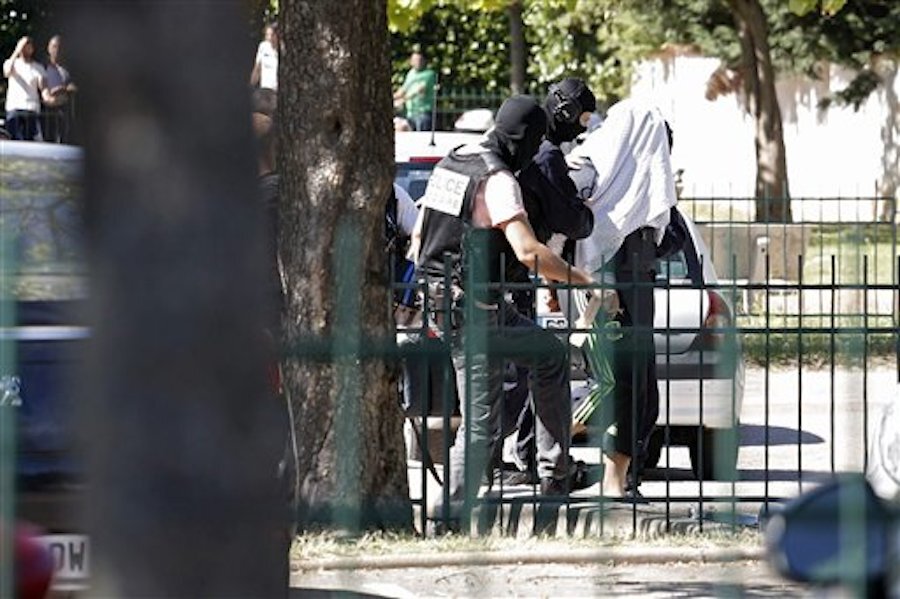Isolating radical Islamists may create 'time bombs,' says prison authority
Loading...
France is still battling the growing radicalization of its prison inmates, yet it seems to be running out of effective solutions.
In a report published Tuesday, France’s prison controller Adeline Hazan denounced the government’s “proselytizing prevention units,” calling them “potentially dangerous.” The units are part of a government initiative to isolate radical inmates to prevent them from recruiting their fellow prisoners, Vice News reported.
"There is a risk of exacerbation and a snowball effect," said Ms. Hazan. "We risk creating time bombs."
Officials first experimented with the isolation initiative in October 2014 at the Fresnes prison. Inmates that identified as radical Islamists were grouped together, leading to confrontations with prison guards, according to the French daily Liberation.
Months after the initiative took off, a gunman carried out three attacks, killing a policewoman in Montrouge and four hostages at a kosher supermarket in Paris. Amedy Coulibaly, the suspect in case, had been held in France’s largest prison, Fleury-Merogis, for armed robbery.
In a video published online after his death, Mr. Coulibaly is seen declaring allegiance to the head of the self-proclaimed Islamic State, Abu Bakr al-Baghdadi. Coulibaly told police that while he was at Fleury-Merogis, he was in regular communication with Djamel Beghal, a French Algerian inmate convicted of plotting to blow up the US Embassy in Paris in 2001.
Following Coulibaly's shooting spree, French Prime Minister Manuel Valls said he would bring 60 more Muslim chaplains to the nation’s prisons, doubling their budget to try to combat radicalization, The Chicago Tribune reported. He also reiterated the suggestion of grouping the most dangerous inmates together in hopes that they wouldn’t be able to influence the general prison population.
But opponents of the isolation initiative suggested that the experiment may be counterproductive. Instead of appeasing radical tendencies, Fesnes prison guard Ahmed El Hoummass told the French paper Le Figaro, "their isolation is in fact a form of 'career development.' "
“They will teach each other how to better practice radicalization. On top of that, the real leaders never show their face, they don't draw attention to themselves. It's the most vulnerable that get labeled extremists,” Mr. Hoummass said.
Nearly a month after the attacks in France, a gunman in Denmark opened fire at a free speech event and then at a Copenhagen synagogue, killing two men. Soon after, Belgium followed suit with its own isolation program.
These weren’t the first attempts to segregate radical inmates in European prisons.
Two Netherland prisons in Vught and in Rotterdam have had isolated terrorism units since 2005, after inmates in each attempted to recruit fellow prisoners. Once the prison authorities caught on, they grouped the threatening inmates together. Yet critics say that the tactic only helped the inmates reaffirm their violent tendencies.
“Terror suspects should not be locked together, because this leads to further radicalization of this group of prisoners,” researcher Daan Weggemans of the Centre for Terrorism and Counterterrorism at Leiden University told the Dutch Broadcasting Foundation.
In 2010, the International Center for the Study of Radicalization and Political Violence published a report on the radicalization and de-radicalization of prison inmates in 15 countries.
All prison services that deal with terrorists need [answer] three related questions, namely whether they should all be held in one place (concentration); whether they should they be separated from the general prison population (separation); and if they should be isolated from each other (isolation).
Concentration, separation and isolation may be good ways of stopping efforts to radicalize and recruit the general prisoner population, and they will prevent any emerging links between terrorists and ‘ordinary’ criminals. At the same time, concentration, separation and isolation provide a focus for public attention and protest; they emphasize the different (that is, political) nature of their crimes; and – if prisoners are concentrated and separated but not isolated – they enable prisoners to re-create operational structures and confront the prison authorities as a united force.
Hazan, who is responsible for France's prisons, suggests two possible alternatives: creating "de-radicalization programs" and transferring extremist inmates throughout the country in hopes of diffusing their influence and preventing the creation of a critical mass of extremists.
There is no "miracle solution to the complex issue of radicalization" within prisons, she told Vice, but "leaping to the conclusion that [extremist] inmates should be kept in isolation was premature."







